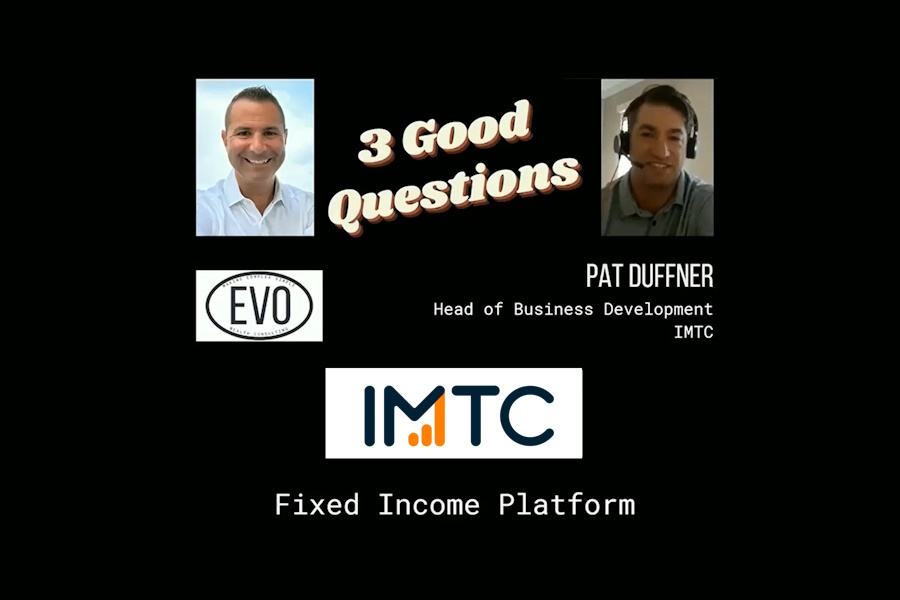Driving Change: A Guide to Successfully Demonstrating the Value of Technology to Executives

Technology has revolutionized our world, offering unprecedented insights, connectivity, and automation. In the financial services industry, companies that fail to embrace modernization risk falling behind their competitors. Investment management firms, in particular, recognize the value of technology as a key competitive advantage and a top priority.
The responsibility of demonstrating this value often falls on the technology users themselves when management fails to drive the change. If you’re a portfolio manager looking to showcase the potential of new technology in financial services, particularly in fixed income, there are several key considerations to keep in mind, along with recent examples showcasing the impact of technology in this domain.
Defining the goals for technology modernization
Before undertaking a major technology overhaul, it is crucial to articulate the anticipated value that the technology will bring to the firm. Senior management will be interested in how the technology can generate additional revenue, protect existing revenue streams, enhance internal operations to reduce costs, or improve efficiencies.
Being clear about the ultimate value you’re bringing to the firm and defining the criteria for success will be necessary for internal negotiations. You should be able to clearly define how new data or technology will enable your firm to:
- Grow AUM: New platforms that automate processes improve a firm’s capacity to manage more assets without requiring additional headcount. For example, using automated trading systems powered by algorithms can enhance trade execution efficiency and improve scalability.
- Bring new products or services to market: Technology enables firms to offer innovative solutions and provide unique investment opportunities that were previously unattainable. For example, leveraging artificial intelligence (AI) and machine learning (ML) algorithms to analyze vast amounts of data can help identify new investment strategies or uncover untapped market opportunities. This can directly enable new offerings, or indirectly, can enable you to drastically reduce bloat.
- Enhance client satisfaction: Technology expands an investment firm’s ability to provide transparency and personalized experiences for clients. For instance, leveraging advanced data analytics and visualization tools can offer clients real-time insights into their portfolios, enabling more informed decision-making and strengthening the client-advisor relationship.
- Improve overall performance: Modern technology solutions often provide enhanced insights and predictive analytics, empowering portfolio managers to make stronger investment decisions. By leveraging sophisticated risk management tools and data-driven models, firms can optimize their portfolios and improve overall performance.
Quantifying the ROI for technology investments
Once the value of technology has been defined, it is essential to quantify the potential ROI and establish clear metrics for success. This enables you to demonstrate the impact of investing in a new system, such as an Investment Management Software (IMS) platform.
Examples of quantifiable benefits include:
- AUM growth: If technology enables your firm to launch new revenue streams or to grow existing business, firms are often supportive of new technology investments.
- Cost savings: Consolidating legacy systems and eliminating siloed data across various teams can reduce operational costs. By retiring outdated systems and streamlining processes, firms can achieve significant savings.
- Productivity improvements: Implementing a new platform that offers automation and enhanced visibility into analytics can lead to improved day-to-day operations, higher productivity, and increased collaboration. The time savings realized means firms can grow business with existing staff or provide higher levels of service to clients.
- Enhanced risk management: Advanced technology solutions can enable investment firms to mitigate risk and adhere to compliance more effectively. For example, eliminating the chance of overdrawing your accounts or inadvertently making an investment that falls outside of strategy can be a costly mistake.
Overcoming objections from skeptics
Even with careful preparation, skeptics and naysayers will likely be present during presentations to senior management. It is crucial to anticipate the objections they may raise and prepare a strong rationale in response. For instance, a CFO aiming to cut costs may question the need for a new technology investment, while the CTO may inquire about integrations into the existing tech ecosystem and resource requirements for implementation.
These concerns often arise from genuine skepticism and can be addressed by demonstrating ROI, value-add, and thorough research into vendors. For instance, showcasing how the technology will save time through automation and provide additional insights for higher-value work can ease concerns and contribute to firm growth. Additionally, many find it useful to put a comparison together across several vendors (prior to a formal RFP process).
Solidifying the pitch to key stakeholders and ultimate decision-makers
As the champion for technology, collaborating with vendors to gather resources that effectively convey the value of an investment is often beneficial (chances are, they have useful content already existing!). When pitching for a new system internally, it is important to consider the varying roles and objectives that resonate with different levels and departments within the organization. What are their primary concerns and goals? How does this investment align with those priorities? By addressing the concerns of each stakeholder and establishing a clear connection between the technology and alleviating pain points, the chances of obtaining executive buy-in for the investment are significantly greater. Providing tangible examples that showcase the benefits of adopting the technology will greatly contribute to highlighting the necessity and value of the investment.
After delivering an initial pitch, it may be necessary to address the concerns and benefits directly with the ultimate decision-maker. You need to consider how to escalate the initiative to the right people – how do you move up the corporate hierarchy and who will you need to get on board? This often involves persuading potential users, obtaining additional approvals from executives, and involving more stakeholders across the company.
Furthermore, most firms require a comprehensive technology evaluation, which includes initiating the RFP process, conducting thorough vendor due diligence, and assessing security concerns.
The cost of doing nothing
Many initiatives to explore adding new technology end with the decision to keep processes as is. However, it is important to consider the cost of doing nothing.
Failing to embrace technology and modernize systems can result in missed revenue opportunities, increased operational inefficiencies, poor performance, and limited growth. Legacy systems and manual processes can be time-consuming, error-prone, and expensive to maintain.
For example, the lack of innovation in fixed income technology has led at best to missed opportunities, and at worst, costly mistakes.
Without these tools, portfolio managers may struggle to make informed investment decisions and may not be able to effectively manage and scale AUM. Ultimately, the cost of doing nothing can lead to stagnant growth, diminished competitiveness, and missed opportunities in an ever-evolving financial services landscape.
Conclusion
Once all the necessary components are in place – clearly defined objectives, quantified purchasing details, and effective objection handling – any portfolio manager is prepared to embark on the modernization journey.





